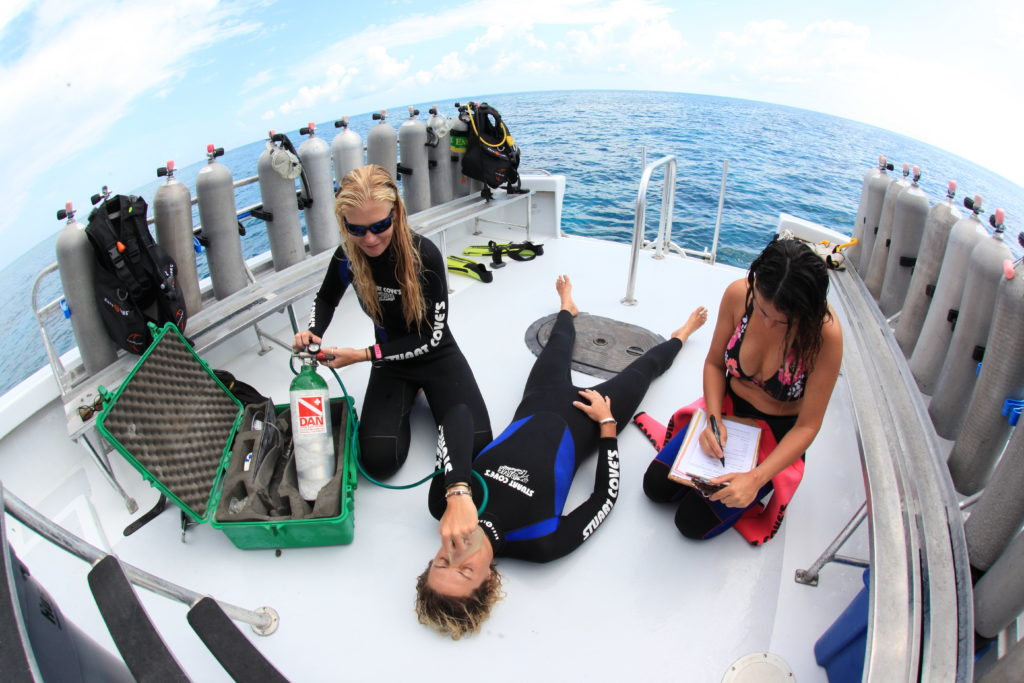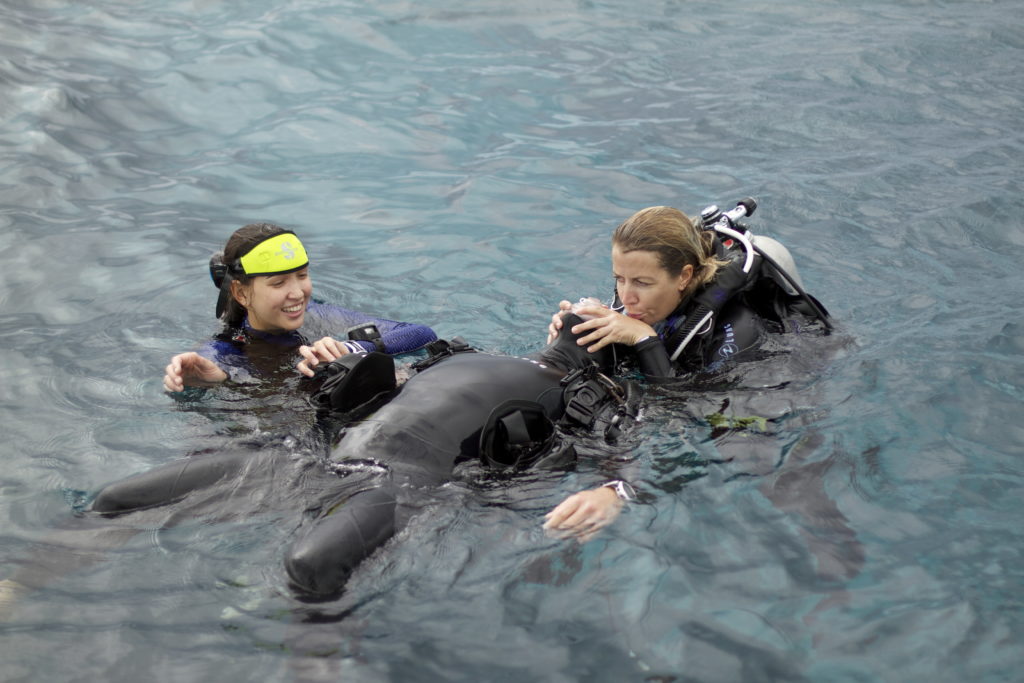As an instructor, new divers commonly ask me how far they should go with their diving certification. Clearly not everyone wants to become a professional, but progressing through your training to become a Rescue Diver could save lives one day, including yours. Although you’ve learned the basics during your Open Water course, and built upon them in your Advanced Open Water, neither of these fully prepares you to deal with a variety of dive accidents.
Why Rescue Diver?
The Rescue Diver Course (called similar names by different agencies) is the minimum level you should aim for as a recreational diver. The course will teach you how to prevent and manage problems and become a more confident diver. There will almost always be professionals, trained to deal with accidents, onboard when you’re on a dive boat, but what if there are multiple victims? Maybe you’re just diving with your buddy and not near a dive professional at the time an accident occurs.
Often, couples and families dive with one person taking on a leadership role, and the others rely on this person. But what if the leader needs help? Many of us regularly dive with family and friends, and knowing you can help them, should something occur, will give you peace of mind. You can become a PADI rescue diver as young as 12 years old, so encourage the whole family get involved and take the course together.
Becoming a Rescue Diver
To become a PADI Rescue Diver you must also get training in first aid and CPR. This makes sense, since once you’ve rescued a diver, you may need to provide CPR or tend to their injuries. The Emergency First Response Course takes one day to complete, and you’ve also got the option of doing Automatic External Defibrillator (AED) training and Emergency Oxygen Provider. This is a non-diving program and great to know, just for everyday life. First Aid and CPR regulations continually change, so you must refresh this training every two years to keep up-to-date. After completing the EFR course, you can complete your Rescue Diver training.

What’s involved?
The PADI Rescue Diver Course begins with theory, which covers everything from the psychology of rescue to accident management. You will even learn how to create your own Emergency Assistance Plan so you can always have one ready wherever and whenever you dive. You can do this portion of the course through online learning or through manual and DVD.
The first water skills you practice will review your self-rescue procedures. As I mentioned before, the Rescue Diver course is as much about saving yourself as it is others. Some of these skills will be ones you learned in your initial training, which offers a great way to refresh and develop your skills. You’ll then move on to complete 10 exercises, including: assisting a panicked diver at the surface; how to quickly and efficiently search for a missing diver; surfacing an unresponsive diver; helping an unresponsive diver at the surface; and different techniques to respond to a diver from a boat or shore. The course will cover both minor and major emergencies and show a variety of techniques to address them. The course ends with some scenarios to help you put these skills into practice. Although the course is challenging, it’s also quite rewarding and a lot of fun.

Rescue is within reach
When you’re considering Rescue, keep in mind that it’s not a professional rating — don’t feel that it’s out of reach for you. The course is flexible and there is no limit on how long it takes you to complete. Some of the skills can be physically challenging, so they may take many attempts to achieve. This is normal, and more practice will only make you better at the skills. Your Instructor will demonstrate various techniques for each skill to suit your physical ability, so you needn’t be a body builder to complete them.
Once you obtain the rating, it’s extremely rewarding to know that you’re prepared to help both yourself and other divers in case of emergency. Remember that although scuba diving has an excellent safety rating, just as in everyday life, accidents can happen. Become the person who can help prevent or deal with accidents, and you’ll become a happier, more confident diver in the process.
The PADI Rescue Diver Course is available at Stuart Cove’s Dive Bahamas for both diver and instructor levels. Contact PADI Gold Course Director Hayley-Jo Carr at [email protected] for details.

